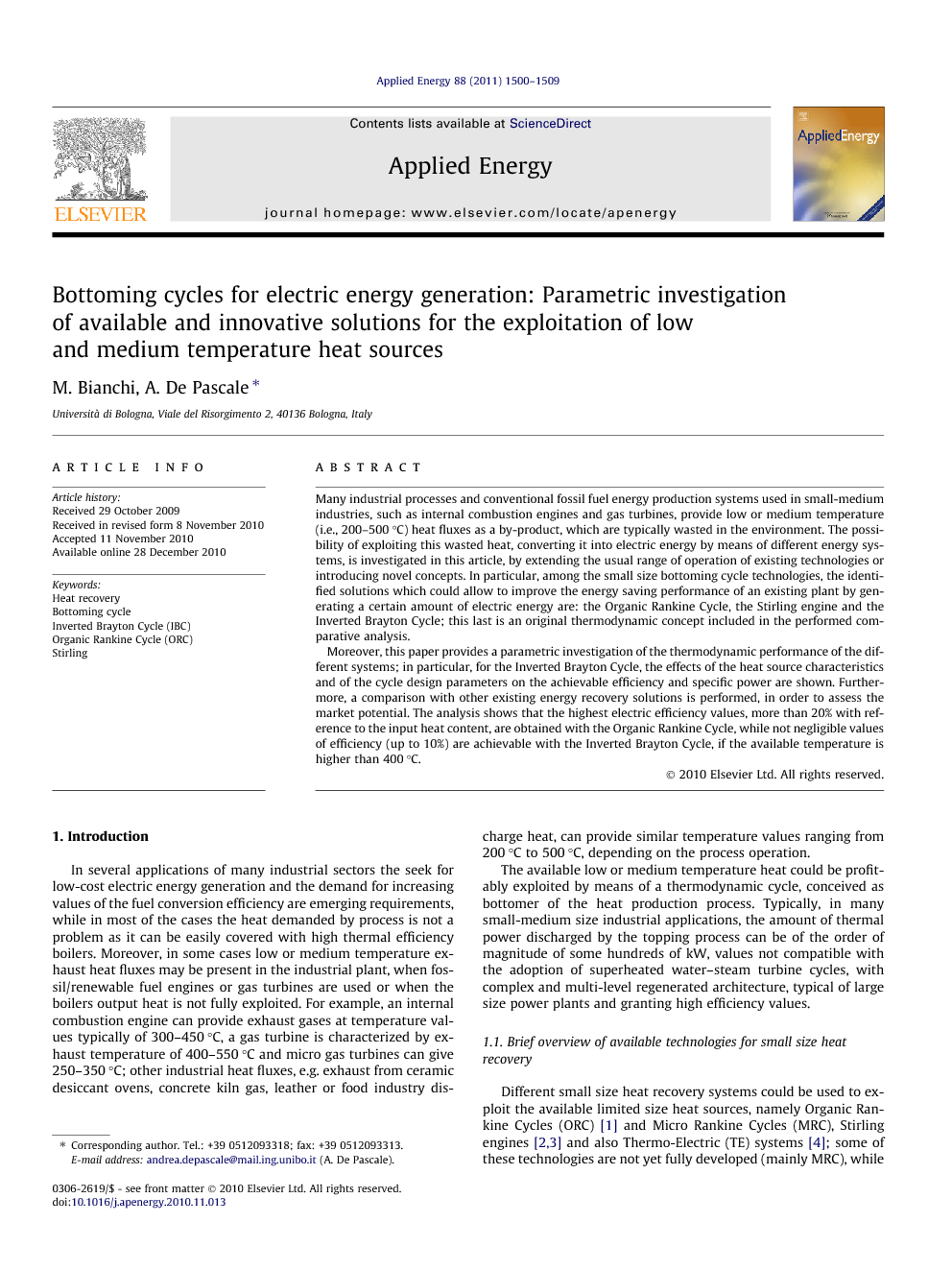ترجمه فارسی عنوان مقاله
چرخه های زیرین برای تولید انرژی الکتریکی: بررسی پارامتری راه حل های موجود و نوآورانه برای بهره برداری از منابع حرارتی در دمای پایین و متوسط
عنوان انگلیسی
Bottoming cycles for electric energy generation: Parametric investigation of available and innovative solutions for the exploitation of low and medium temperature heat sources
| کد مقاله | سال انتشار | تعداد صفحات مقاله انگلیسی |
|---|---|---|
| 20379 | 2011 | 10 صفحه PDF |
منبع

Publisher : Elsevier - Science Direct (الزویر - ساینس دایرکت)
Journal : Applied Energy, Volume 88, Issue 5, May 2011, Pages 1500–1509
ترجمه کلمات کلیدی
گرما بازیابی -
چرخه برایتون معکوس () -
سیکل رانکین آلی () -
استرلینگ
() -
()
کلمات کلیدی انگلیسی
Heat recovery,
Inverted Brayton Cycle (IBC),
Organic Rankine Cycle (ORC),
Stirling,

